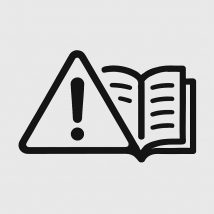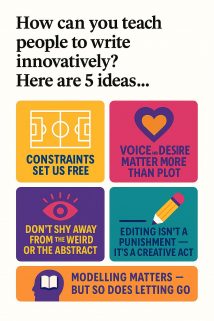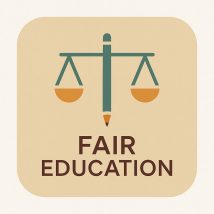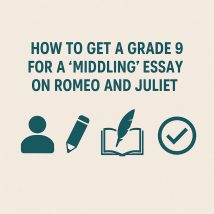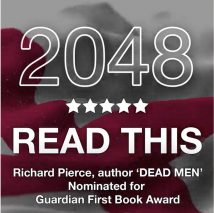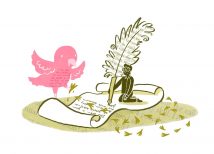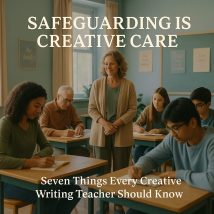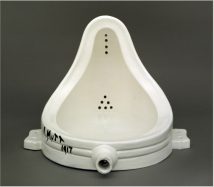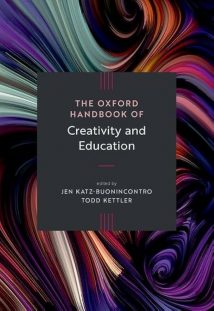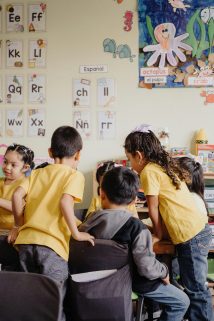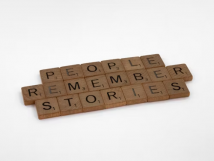Key concept
The main theme or keyword of a particular post, maybe with reference to a teaching or national curriculum topic.
-
Five Things We Can Learn from Faking Hitler: Lies, Truth, and the Seduction of Fiction
I wrote this piece after finishing Faking Hitler, the German drama now streaming on Channel 4. It’s a gripping, ironic, and surprisingly funny retelling of the Hitler Diaries scandal, a real event where forged Nazi documents were sold to Stern magazine in the 1980s. What drew me in wasn’t just the slick production or the fascinating story, but the deeper questions the series raises about truth, memory, and the fictions we choose to believe. This drama isn’t just about a historical hoax; it’s about our relationship with the past — and how easily we rewrite it. Through sharp writing and unforgettable performances, Faking Hitler explores how trauma, ambition, ideology, and denial can cloud even the sharpest minds. It’s a series that resonates disturbingly with our own times, when truth feels fragile and authoritarian myths resurface in new forms. I wanted to unpack five key takeaways from the show — about journalism, fascism, generational reckoning, and the seductive power of lies. This article is my attempt to make sense of a drama that is as psychologically rich as it is entertaining. If you’re interested in truth, fiction, or the strange space in between, read on. #FakingHitler #Channel4 #MediaEthics #Fascism #TruthAndFiction #BlogPost #CriticalMediaLiteracy #CreativeNonfiction #HistoricalDrama #MindfulMedia
-
Five things I’ve learnt training to be a mindfulness teacher
Earlier this year, I completed the Breathworks mindfulness teacher training—a rigorous and transformative journey rooted in compassion, embodiment, and lived experience. As part of the training, I led the Mindfulness for Stress course at Goldsmiths. It taught me something simple but profound: mindfulness isn’t something you explain. It’s something you do—together. The course invites people into a shared practice. Week by week, breath by breath, we learn not to escape stress but to meet it differently—with gentleness, attention, and care. I’ve seen how powerful it is when people turn toward themselves with kindness, not judgement. That shift—toward noticing, softening, and storytelling—transforms more than you might expect. Mindfulness isn’t about fixing or improving who you are. It’s about showing up for your experience, fully and kindly. This work has changed me. It’s helped me listen to my body, soften my inner voice, and meet difficulty with presence instead of resistance. If you’re curious about mindfulness, teaching it, or simply beginning to practise, I’d love to connect. Feel free to reach out—or just pause for a breath, right here. #Mindfulness #Breathworks #MindfulTeaching #Wellbeing #Embodiment #Compassion #FrancisGilbert #Goldsmiths #MindfulLiving
-
How can you teach people to write innovatively? Here are 5 ideas…
In this practical and thought-provoking article, I reflect on a brilliant CPD session led by writer and teacher Niall Bourke as part of the MACWE summer programme. Niall offered a masterclass in how to teach creative writing in ways that are emotionally rich, structurally sound, and genuinely original. The article outlines five key takeaways that challenge conventional, formulaic approaches to writing instruction. From the power of constraints to the centrality of voice and desire, from embracing the weird and abstract to viewing editing as a creative act, and finally to the importance of modelling without over-directing — these insights offer teachers and writers alike a fresh, flexible “toolkit” approach. Full of vivid examples, quotable gems, and links to wider reading, this piece is for anyone who believes that creative writing teaching should spark joy, courage, and clarity — not just box-ticking or genre mimicry.
-
Four Reasons Why VAT on Private School Fees Is a Good Idea
On LBC with Matthew Wright, I explained why VAT on private school fees is a fair and vital policy. It ends an unjust tax break, redirects funding to state schools, and encourages social integration. As a teacher, parent, and advocate for mindful education, I’ve seen how this can build a fairer system. Read more and listen in at www.francisgilbert.co.uk. #MindfulLearning #EducationPolicy #VAT #FairEducation #LBC
-
🏅Model GCSE Essay on the Feud in Romeo and Juliet
If you’re teaching or studying Shakespeare’s ‘Romeo and Juliet’, you’ll know that essays about the family feud often hover around a Grade 4, 5 or 6—what examiners might call ‘middling’ or ‘competent’ responses. But with a few targeted improvements, these essays can be transformed into top-grade responses. I’ve updated one of my most popular blog posts to show exactly how to do this, paragraph by paragraph, with comments, grade 9 tips, and clear marking guidance for teachers and pupils alike. The key is to move beyond surface-level understanding and begin thinking like a literary analyst. That means really digging into Shakespeare’s language (AO2), showing a secure knowledge of the play and its themes (AO1), and crucially, thinking about why Shakespeare wrote what he did, and how his audience might have reacted (AO3). This is where the 5Ws strategy—Who, What, Where, When, Why—comes in. For example, instead of simply quoting the Prologue’s “ancient grudge” to describe the feud, a top-grade response will explore the word “ancient” in more depth. What does it suggest about tradition, time, and decay? What kind of audience would Shakespeare have been writing for, and why might he start with such a phrase? A Grade 9 student doesn’t just spot a quote—they zoom in on the language, explain the technique being used, and link it to Shakespeare’s bigger message about love, hate, and fate. I’ve used a visual symbol system in the new version of this post to make each part of the answer easier to teach and understand. A pencil icon stands for thoughtful analysis, a book and quill symbol represents literary and historical context, and a checkmark indicates where a pupil is showing Grade 8–9 thinking. I’ve also added a quiet but clear visual: a student figure at the centre of the learning, reminding us this is about developing real, mindful confidence—not just ticking boxes. This new breakdown works well for teachers modelling essays in class, for pupils revising independently, and for tutors looking for a clear teaching sequence. And if you’re looking for more structured support, I’d recommend my edition of the play, Romeo and Juliet: The Complete Play with Integrated Study Notes and Smart Translation—ideal for exploring language, structure and context in one place. For teachers, The Mindful English Teacher includes ideas for making literary analysis more inclusive, reflective, and emotionally aware. You can view the updated post and download the image resources now at francisgilbert.co.uk, or find the essay thread pinned to my socials. Let me know how you use it, and feel free to tag me with examples of Grade 9 insights from your own pupils!
-
Six Things We Can Learn About Publishing and Navigating the World as a Writer
What does it mean to publish bravely? To speak even when your voice shakes, or is hidden behind a pseudonym? We were honoured to welcome back Nick Bailey, alumnus of the MA in Creative Writing and Education, who opened up a rich, moving conversation about the realities of writing and publishing today. From self-publishing his genre-bending novel 2048 to working with a values-driven indie press, Nick shared not just tips, but truths: how publishing can empower, expose, disguise, and liberate. We heard from participants using pseudonyms to survive racism in education, from writers navigating rejection, and from those reshaping what it means to “be seen.” This blog distils six powerful takeaways — from building creative resilience, to understanding publishing as pedagogy. It’s about voice, not vanity. Process, not product. And why the best reason to publish is because your story needs to be told. Read it in full on my site. Reflect. Share. Teach. Because writing bravely is where publishing well begins. #MindfulPublishing #CreativeWritingEducation #NickBailey #SelfPublishing #IndiePress #PublishingAsPedagogy #MAWritingEducation #WritersOfInstagram #LinkedInWriters #BlueSkyWriters
-
Guerrilla CPD: Why Research-Informed Teacher Collaboration is the Future
I co-wrote “Guerrilla CPD” with Debbie Bogard to shine a light on the power of informal, grassroots teacher development. Debbie is a brilliant, research-informed practitioner working in Further Education, and collaborating with her was both inspiring and energising. Together, we drew on our shared belief that CPD works best when it emerges organically—through dialogue, creativity, and mutual respect—not when it’s imposed from above. Our article explores how we developed a playful, teacher-led CPD programme during the pandemic, rooted in the radical pedagogies of Freire, hooks, and Fanon. It was a time of crisis, but also one of possibility. We found that when teachers are given space to reflect, write, share ideas, and challenge dominant norms—particularly around curriculum content and delivery—something transformative can happen. Working with Debbie reminded me that the future of professional development lies in collaboration between FE and HE, between practice and theory, and between colleagues who trust and challenge each other. In a profession increasingly shaped by surveillance and accountability metrics, these kinds of informal, friendship-driven partnerships may be our best hope for genuine change.
-
Five Salty Lessons from The Salt Path: Walking the Edge of the World
I wrote Five Salty Lessons from The Salt Path after watching the new film adaptation of Raynor Winn’s powerful memoir. Having read the book, listened to the radio version, and walked sections of the South West Coast Path myself—often with my son—I was moved by how the film captured the raw, weather-beaten truth of Raynor and Moth’s journey. This piece blends personal reflection with literary and philosophical insight, drawing on thinkers like Deleuze, Spinoza, and Wordsworth, and weaving in texts like Beowulf to explore the deeper meanings of salt, walking, homelessness, love, and home. More than a review, it’s an essay about transformation: how walking can be a form of becoming, how landscapes tell stories, and how we find belonging not in possessions, but in presence, connection, and kindness. If you’ve ever felt changed by a path, haunted by a film, or comforted by a wild blackberry on a wet day, I hope this speaks to you.
-
The Mindful Creative Writing Teacher
This blog introduces The Mindful Creative Writing Teacher—my book for anyone teaching or facilitating creative writing, whether in schools, universities, prisons, or community spaces. Drawing on decades of experience, I offer a fresh, practical, and compassionate approach to teaching writing that blends mindfulness, creativity, and social justice. In the blog, I explain why I wrote the book: to move beyond rigid workshop models and embrace a more humane, dynamic, and inclusive pedagogy. The book is filled with real-life case studies, poems, hands-on activities, and reflective prompts designed to help you cultivate creativity, wellbeing, and critical thinking in your classroom. It’s for English teachers, creative writing tutors, and writers alike—especially those looking to empower diverse voices, support reluctant or neurodiverse learners, and find joy in their own writing again. You’ll find strategies for teaching storytelling, feedback, decolonisation, and multimodal writing, as well as guidance on developing your own mindful teaching identity. This blog offers a glimpse into the book’s ethos: writing not just as a craft to be perfected, but as a transformative act of attention, empathy, and expression. If you’re looking to teach writing in a way that’s more authentic, creative, and connected, this book—and blog—are for you.
-
7 Transformative Lessons from First Story’s Creative Writing Approach – A Goldsmiths Reflection
In this blog, I reflect on an inspiring session led by novelist and First Story writer-in-residence Pete Hobbs. Drawing on seventeen years of working with young writers, Pete shared a wealth of practical, playful exercises and a deeply inclusive pedagogy that reimagines creative writing as a space for experimentation, voice, and community. From evoking memory through sensory detail to empowering students to write in their own linguistic registers, his approach offers powerful strategies for educators at all levels. This post captures the session’s key takeaways—and celebrates the joyful, transformative possibilities of writing. It left me rethinking how I teach.
-
Seven Things Creative Writing Teachers Should Know About Safeguarding
I’m Francis Gilbert, and I’ve just published a vital blog post: Seven Things Creative Writing Teachers Should Know About Safeguarding. Drawing on a powerful masterclass led by Danja Sanovic at Goldsmiths, I reflect on how safeguarding isn’t just a legal box-tick but a deeply creative, relational act. Whether you’re teaching in schools, leading workshops in the community, or working with adults, this post offers clear, compassionate guidance. It’s essential reading for anyone using writing to reach vulnerable groups. Creativity thrives when everyone feels safe. Read the post and rethink how you hold your writing spaces.
-
6 Ways to Design Effective Creative Writing Lessons
I’ve written this blog to share some of the key insights from a recent seminar I delivered for students on the MA in Creative Writing and Education at Goldsmiths—and for anyone interested in designing more mindful, engaging creative writing lessons. Drawing on the CASTERS framework, James Nottingham’s “Learning Pit,” and ideas around publishing, reflection, and inclusive practice, the session offered practical strategies for teaching writing with presence, purpose, and care. Whether you’re a teacher, writer, or facilitator, this blog offers inspiration and guidance for creating lessons that challenge, connect, and empower. Find out more and join the conversation.
-
📎 CUT + COPY + TEACH: 5 Ways Uncreative Writing Will Turbocharge Your Teaching
As a writer and educator, I’ve long been fascinated by how creativity works in the classroom. In this blog, I explore Uncreative Writing, a radical teaching approach developed by Dr Cath Clover. Drawing on her powerful workshop at Goldsmiths, I show how copying, remixing, and reframing existing texts can spark critical thinking, accessibility, and genuine creative joy. Whether you’re teaching English, media, or any subject, this inclusive method helps students find their voice through found words.
-
5 Ways Creative Writing Can Fuel Creativity
I’ve long believed that creative writing isn’t just for the English classroom—it’s a radical, transformative practice that can fuel creativity across the curriculum. In my new chapter for The Oxford Handbook of Creativity and Education, I explore how freewriting, diagrarting, critical literacy, and compassionate feedback can empower learners of all ages. Drawing on decades of teaching experience and recent research, I show how creative writing can heal, liberate, and inspire. This piece is for educators, writers, and anyone interested in reimagining how we learn and grow through words.
-
Publishing as Pedagogy: Why Creative Writers and Teachers Need to Understand the Industry
In this article, I explore why knowledge of the publishing industry is essential for both creative writers and educators. Drawing on my experience teaching publishing to MA students, I argue that understanding how books are produced, marketed, and circulated can empower writers and transform the way we teach creative writing. This piece is both a call to action and a practical guide for integrating publishing literacy into the creative writing classroom.
-
Five Ways to Decolonise the Teaching of Creative Writing
In April 2025, I had the joy of welcoming back Carinya Sharples—a former student of mine from the MA in Creative Writing and Education I lead at Goldsmiths—for an unforgettable session on Decolonising Creative Writing Pedagogies. Carinya held the space with grace, rigour and radical care, sparking vital conversations about power, voice, and language. In this blog, I share five key strategies that emerged from her talk and my own experience—practical, powerful ways to rethink how we teach creative writing. If you’re ready to challenge norms and embrace liberatory practice, come explore more with me by reading the blog.
-
Reimagining the Future of Publishing: Five Observations on YA, Pedagogy, and Digital Literature
In this blog, I explore how contemporary YA literature acts as both a cultural mirror and a critical tool—reflecting the world young people live in while helping them make sense of it. Drawing on Suico et al.’s content analysis and Warner’s ideas about literature as ritual, I look at how YA fiction engages with themes like trauma, justice, and identity. I also consider the growing academic interest in YA and what this means for classrooms today. Ultimately, the blog reflects on how YA can offer not just stories, but space—for reflection, resistance, and hope.
-
The perils and pleasures of creative writing competitions and prizes: 5 key points
Prizes often symbolize external recognition, but what if I reimagined them as personal milestones—self-awarded markers of creativity, persistence, and growth? In this blog, I explore how literary prizes shape careers and confidence while offering five strategies to navigate competitions and create personal benchmarks. I introduce ‘internal prizes’—small yet meaningful ways to celebrate achievements, from finishing a tough draft to inspiring students. Drawing on insights from Kei Miller, Kristin Neff, and literary organizations, I invite you to rethink success and resilience. Prizes have power, but they don’t define your worth. Honour your journey—on your terms.
-
Creative writers and marketing: some thoughts and observations
Marketing isn’t just about selling books—it’s about finding the right readers, refining your creative process, and sharing your work with confidence. In this blog, we explore marketing in the publishing industry through the lens of the writer as a healer, teacher, researcher, and reflective practitioner.
-
Using publishing tools to create thriving creative writing communities and cultures
Publishing isn’t just about books—it’s about shaping identity, community, and activism. This blog explores how the MA Creative Writing and Education at Goldsmiths uses publishing as a pedagogical tool, from internal dialogues between the Writer, Publisher, and Healer within us, to global projects like GlobalGRACE and Creative Voices, which use storytelling, theatre, and art to amplify marginalised voices. Discover how publishing extends beyond the page to empower writers, challenge dominant narratives, and foster creative communities. Read more about how publishing can be a process of transformation, resistance, and education.

